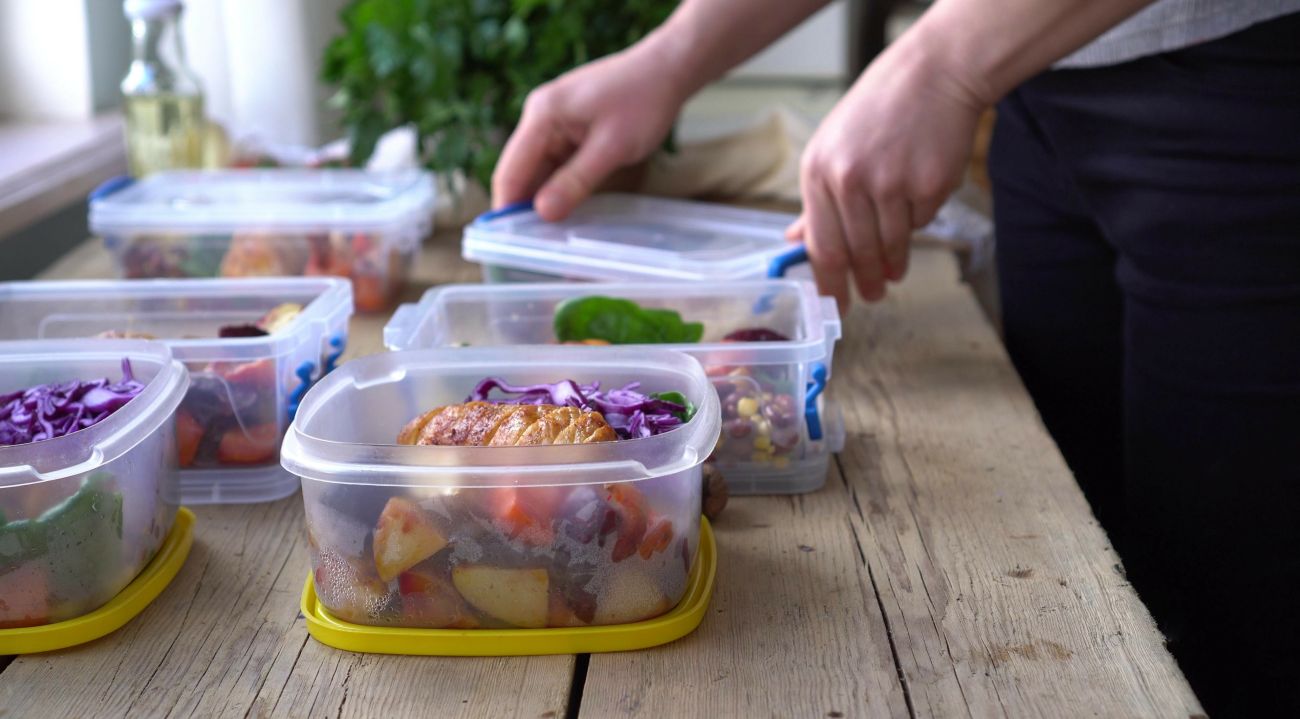Streamlining prepping, cooking, cleaning and storing tasks can help make home-cooked meals a convenient food option.
One of the biggest challenges to preparing home-cooked meals is time. With busy schedules, it is difficult to find time to prepare ingredients and cook meals, and it often feels like the easiest or quickest solution is to grab convenience or fast food on the go. To help make meals cooked at home an easy and quick option, here are some ideas to save time in the kitchen and tips for making meals ahead of time.
Kitchen time-saving tips
- Keep it simple. Home-cooked meals don’t have to be fancy, time-consuming, or complex! Choose easy-to-prepare recipes or one-dish meals like casseroles to streamline the cooking process. Use quick cooking methods like microwaving or grilling to save time or use a slow cooker so you can put all of the ingredients together earlier in the day and have your meal ready when you are. Check out these microwave meal ideas like apple-stuffed squash, breakfast burritos and more.
- Stay organized. Keep your counters clear and the items you use most often in easy-to-grab places to save you time and stress while preparing food.
- Plan ahead. Taking some time to create a meal plan is an important step in making home-cooked meals quicker and less stressful. Check out our article on meal planning and grocery shopping for more information.
- Clean as you go. Washing equipment, pots, pans and utensils after you use them can save on clean-up time.
Preparing food in advance
- Prep ingredients. Set aside time in the beginning of the week or right after you go grocery shopping to wash fruits and vegetables or peel and chop some ingredients you plan to use for meals. You can also cook and freeze ingredients for future use in meals. Ground beef, chicken or turkey and cooked rice are all examples of ingredients that can be frozen in recipe-ready portions.
- Cook once, eat twice.When you are cooking a meal, make extra to freeze. When freezing leftovers, be sure to leave a small amount of air space in the container. Freeze in single or family meal-size portions. Many soups and stews are great freezer meals. You can freeze soups, stews and chili in muffin pans to create smaller portions. Once frozen, pop the “muffins” out of the pan and freeze in a larger container or freezer bag. This way, you can heat and eat just one or two portions at a time. Foods that don’t freeze well include fried foods, milk, sauces and gravies, mayonnaise or salad dressings like in potato or macaroni salads.
- Label. When freezing meals or ingredients, be sure to mark the container with the date and the name of the recipe. Additionally, it can be helpful to keep a list of the foods you have in the freezer along with the date you froze them and the number of portions in the container. You can quickly reference this list to remind you what’s inside your freezer when you need to plan for a meal that only requires a reheat.
Keeping it Safe
- Be sure to quickly refrigerate or freeze the extra portions of food when you are cooking in larger batches.
- To cool food quickly in the refrigerator, use shallow containers.
- Frozen meals usually last three to six months in the freezer.
- Defrost frozen food in the refrigerator or microwave.
- Be sure to reheat thoroughly and in microwave-safe containers. Check out this article from the USDA for additional information on cooking safely in the microwave.
More nutrition tips
Our nutrition team can play an important role in your care — before, during and after treatment.
Learn More

